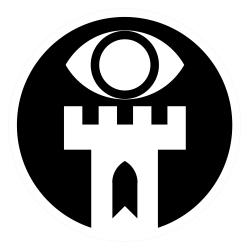A friend asked, so I must answer: what’s the secret recipe for a successful one-shot adventure?

Of course, it’s more art than science, and any chance to gather around a table and imagine with your friends is a good one. There’s also the system factor; different games have very different needs when it comes to one-shots. Still, broad suggestions sometimes help, so here are a few of mine.
Ingredients
The Same Page
Always start with a check-in on the adventure’s vibe, content, and hook. Securing buy-in on all three before people start cementing their characters will help immensely. You don’t have a whole campaign to find the group vibe! Set a clear tone and let players build on it.
A Chance to Stretch Your Legs
Try starting with a provocative situation that lets your players establish their identities quickly. When I run Blood Prairie for new groups, I almost always start with meeting some gamblers in a cemetery. The situation lets PCs position themselves (degen gambler, uptight teetotaler, suspicious of strangers, naive, etc). We get to kick the tires on some skill checks, they almost always catch that the graveyard gamblers are trying to cheat them, and then that rolls right into an easy, introductory combat.
Speaking of…
A Mechanical Challenge
Put that character sheet to use! In most games, this means combat. You’ll probably want at least two (an intro and a climax), and these should probably be very distinct from each other. Try to vary the monsters! Especially if there are immunities at play, mix things up. The last thing you want to do is roll up a character who’ll never get a chance to use their ability because it doesn’t work on undead or some such. If you do go down the path of one enemy type, it may be best to signpost this ahead of time.
A Character Challenge
Next, think about how you’ll get the role play going. Characters in one-shots don’t get a ton of screen time, so they should be extra big while they’re with us. Try to provoke this by giving them some big NPCs to bounce off of. Make sure the stakes of the adventure are present in every scene. At least one scene in the adventure should require the characters to talk their way through it. Bonus points if you can tune a scene for each character. Someone needs a pep talk; someone else must be fooled. If you don’t know what players are bringing, go broad; aim a scene towards broad character types.
A Player Challenge
So the character sheet needs a chance to shine. The character itself needs a chance to shine. What about players?
A good one-shot deserves a good trap — something think-y to get the players engaged. This doesn’t have to be a bunch of pits and pendulums. It could be as simple as a static target that needs to be tactically approached. A fort that needs conquering or a bank that needs robbing are classics that can be the foundation of a one-shot, but smaller situations like a room with an electric floor will also make players use their brains a bit.
A brief sidenote: you’ll notice that mechanical, character, and player challenges map onto the three classic pillars of DnD: combat, social, and exploration. Other games may have other pillars, but you can’t go wrong with these three classics.
A Hard Choice
The game’s secret sauce is agency, so make sure you add a little to your recipe. Give the players a choice to make. This is good advice in any campaign, but one-shots come with an extra caveat: make sure the consequences are immediate. Your players won’t be fired up by a little fork in the epilogue; they want to change the circumstances of the game.
Do you light the mansion on fire, distracting the guards but introducing new dangers during your heist?
Do you save the hostages, even if it means Ul-Shammaz reaches his final form?
Who will you ask to cure the king: the Shadow Witch or those incompetent gnomes you met earlier?
And speaking of little weirdos…
A Memorable Character
A good one-shot needs a good NPC. You might be tempted to include more than one, and that’s cool too, but make sure at least one of them knocks it out of the park. More often than not, this is a quest giver, but it doesn’t have to be.
In my ideal world, this character would be:
- Funny – They should be likeable
- Nice – In my experience, PCs react to NPC rudeness poorly
- Sympathetic – Or even just pathetic. It triggers something in our reptile brains when we see funny people who were nice to us getting their teeth kicked by the universe.
Earnest yearning and humility are powerful inducements. A few minutes of ‘don’t mind me, oh mighty heroes, I’m just the local boot polisher. I’ve been kicked by Lord Evilton every day for the last twenty years, but I’m just grateful not to be in sales anymore’ buys you many years of fond remembrance.
A Big Ending
Using your imagination saves a lot of money on special effects, so go big. Huge! Go too far, stretch things out, flip the board. It’s better to end a one-shot with an apocalyptic TPK than with a low-energy victory. Think of an ending that would do justice to a twelve-session campaign, double the intensity, and throw it out at the end of the three-hour session.
You might as well. There’s no second session to save it for.
Anyways, that’s my modest, quick-and-easy one-shot recipe. I hope you find it useful! And if you think I missed anything, comment below!
Like this blog? Keep reading it! Check out our advice on World Building Signposts or 5e Hexcrawls. Or help fund this insanity by buying one of our modules in the store! Long Bear Valley makes a fine one-shot indeed!
